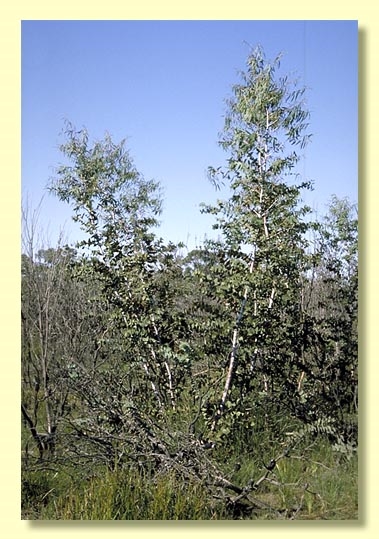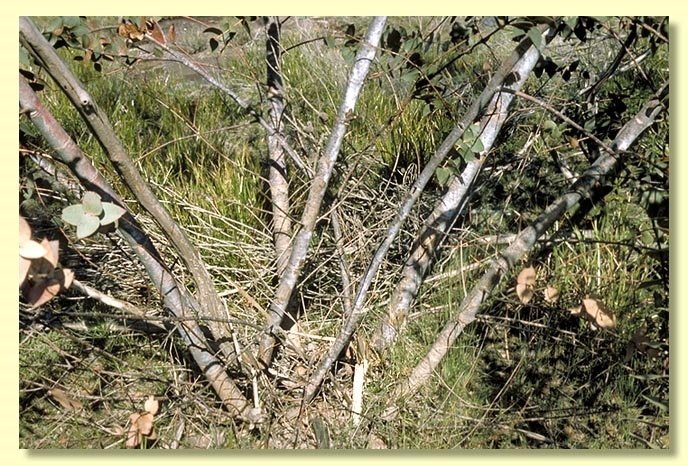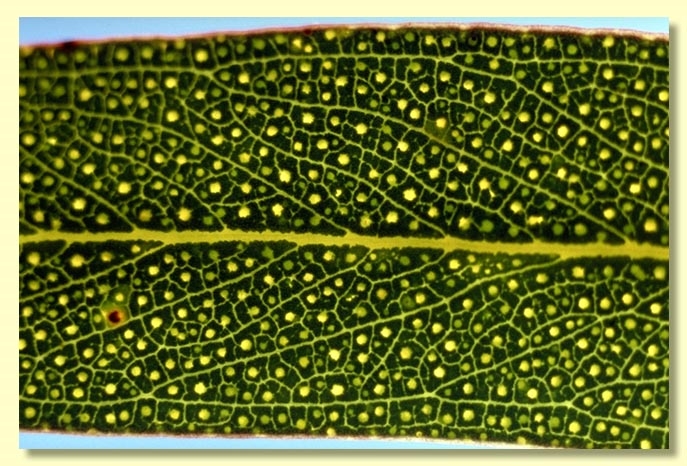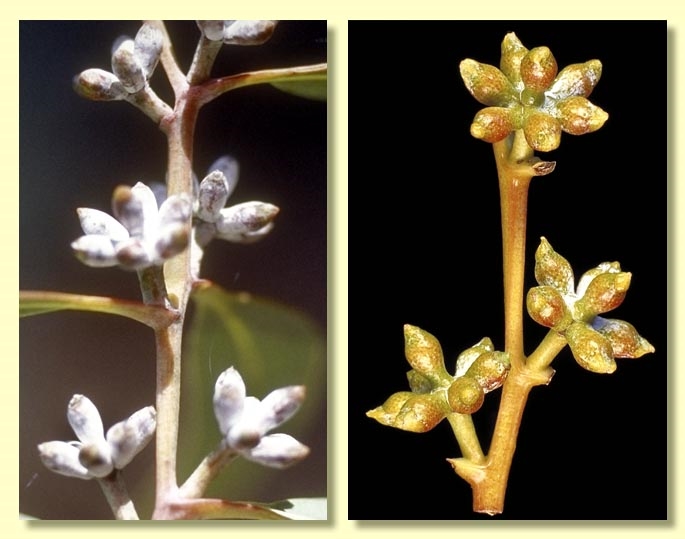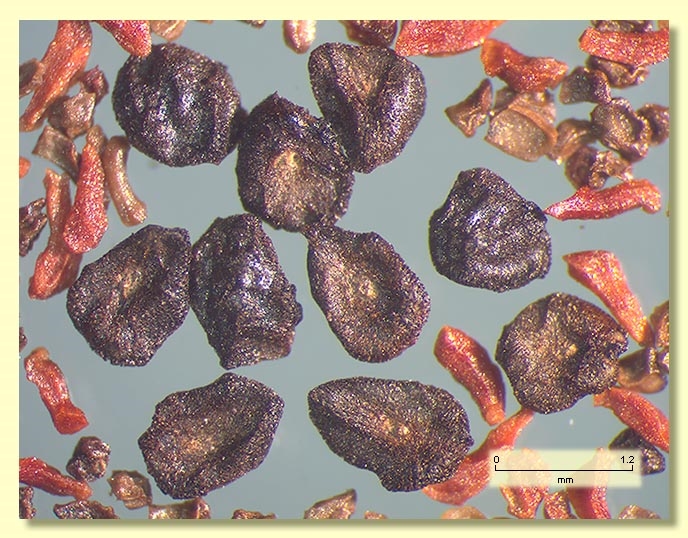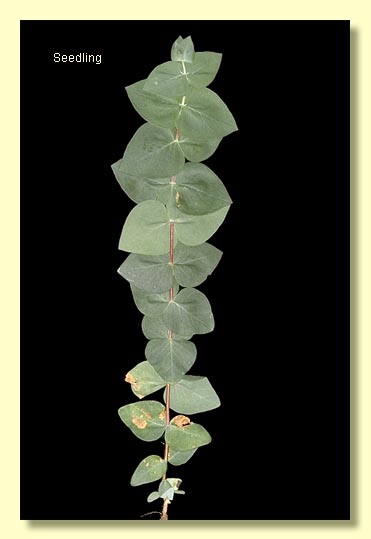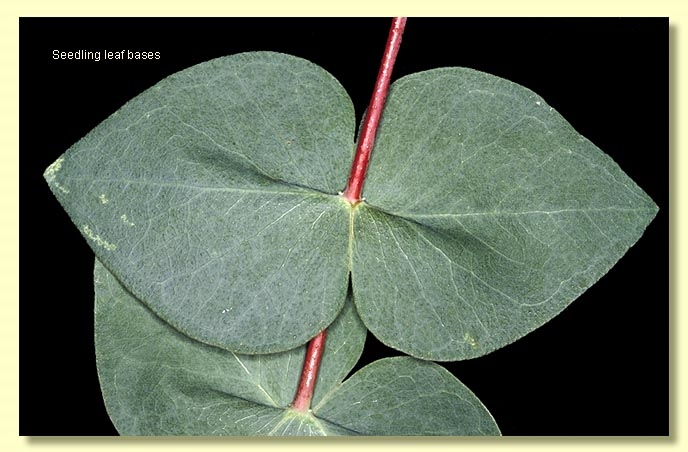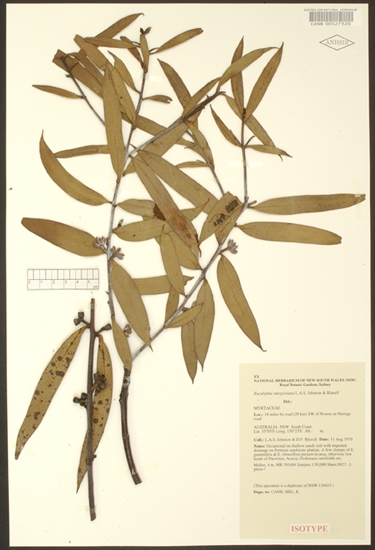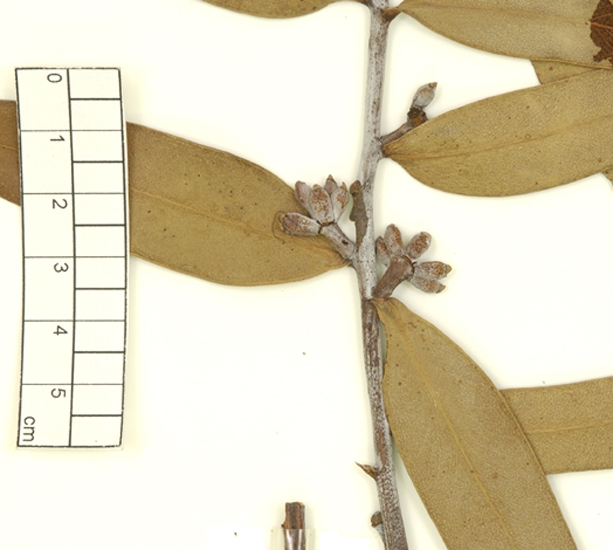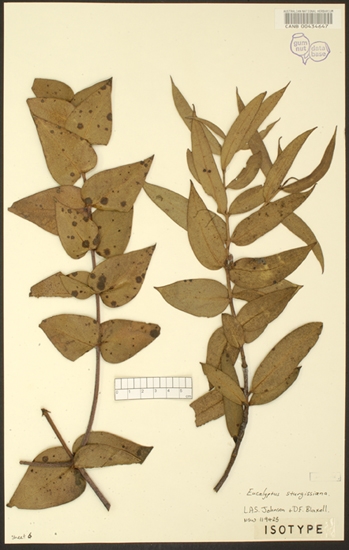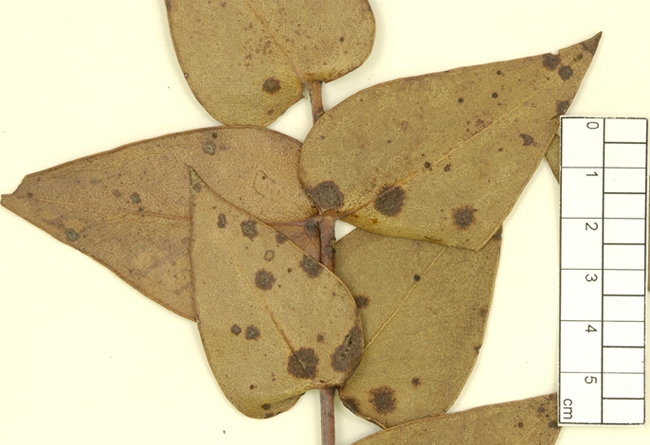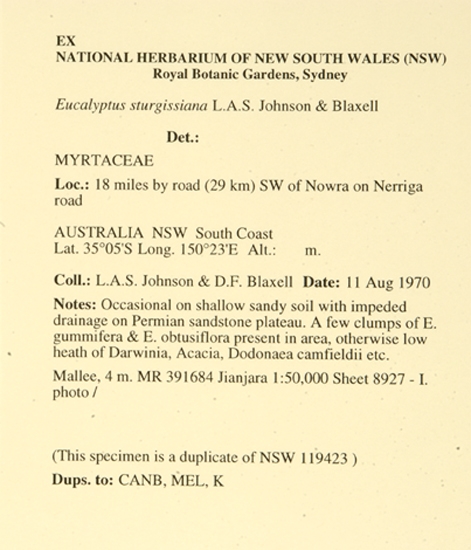Euclid - Online edition
Eucalyptus sturgissiana
Eucalyptus | Symphyomyrtus | Maidenaria | Euryotae | Sturgissianae
T: 29 km SW of Nowra, NSW, 11 Aug. 1970, L.A.S.Johnson & D.F.Blaxell s.n.; holo: NSW; iso: CANB, NSW.
Bark smooth, mottled light grey, grey-brown, pink and green, branchlets often glaucous.
Juvenile growth (coppice or field seedlings to 50 cm): stems glaucous, slightly warty; juvenile leaves sessile, opposite for many nodes, ovate to orbicular, 5–7.5 cm long, 3–7.5 cm wide, bases of lowest leaves connate, later leaves separate and amplexicaul, dull, greyish green to green. Juvenile leaves may persist in crown or true adult leaves may develop.
Adult leaves alternate, petiole 0–1 cm long; blade narrowly lanceolate, 5–10 cm long, 0.7–1.2 cm wide, base tapering to petiole, concolorous, green, usually glossy, side-veins at an acute or wider angle to midrib, moderately to densely reticulate, intramarginal vein parallel to and just within margin or well removed from it (sometimes doubled), oil glands mostly island.
Inflorescence axillary unbranched, peduncles 0.6–1.2 cm long, buds 7 per umbel, sessile or with pedicels to 0.4 cm long. Mature buds ovoid to fusiform, 0.6–0.7 cm long, 0.4–0.5 cm wide, glaucous, scar absent (outer operculum not shed during bud development simply ceasing to grow but remaining adherent to the inner operculum which continues to grow and "emerges" through the top of the outer operculum as the bud enlarges – this is visible to the naked eye), operculum conical, stamens inflexed, anthers cuboid to oblong, versatile, dorsifixed, dehiscing by longitudinal slits (non-confluent), style long, stigma blunt, locules 3 or 4, the placentae each with 4 vertical ovule rows. Flowers white.
Fruit sessile or on pedicels to 0.4 cm long, hemispherical to campanulate, 0.3–0.6 cm long, 0.5–0.7 cm wide, often slightly glaucous, disc raised-annular to convex, or level to slightly descending, valves 3 or 4, near rim level.
Seeds dark brown to black, 1.3–2 mm long, ovoid or flattened-ovoid, often pointed at one end, usually lacunose, dorsal surface smooth or pitted, hilum ventral.
Cultivated seedlings (measured at ca node 10): cotyledons bilobed; stems rounded in cross-section, glaucous; leaves opposite, sessile, cordate to orbicular, 3–5 cm long, 3–5 cm wide, joined at the base (connate) or amplexicaul, margin entire or subcrenulate, apex usually pointed, dull, grey-green to green.
Flowering has been recorded in January and May.
A slender smooth-stemmed mallee confined to an area west and south-west of Nowra on the south coast of New South Wales, mostly on poorly drained sandstone plateaus of Morton National Park but occurring on plains immediately to the east, although never coastal. It is not closely related to any other species and is easily recognised by the juvenile leaves, which are often connate and which are seen invariably on younger plants. The crowns of mature mallees are conspicuously drooping; the adult leaves are strongly glandular. The opercula are distinctive in that the outer operculum does not shed – see details above in description; there is no actual outer operculum abscission scar but a deformed region at the apex of the inner operculum of the growing bud.
Eucalyptus sturgissiana belongs in Eucalyptus subgenus Symphyomyrtus section Maidenaria, a large group of species more or less restricted to south-eastern Australia, characterised by bilobed cotyledons, simple axillary inflorescences, buds with two opercula, stamens with versatile anthers and flattened seeds with a ventral hilum. Within this section, E. sturgissiana stands alone in series Sturgissianae having the combination of characters outlined in the paragraph above.

